(Updated on 2013/8/2)
Markus Diesmann, Team Leader, RIKEN Brain Science Institute (BSI)
NEST investigates whether the model starting from a simple neuron cell model can simulate real brain activities or not.
Point-neuron model
Hybrid ODE+point-event solver
Hybrid(MPI+thread) at same granularity
C++, SLI, MPI, pthread
Source code is available through ISLIM download site.
A network consisting of 1.73 billion nerve cells connected by 10.4 trillion synapses using 82,944 processors (8 cores/processor) of the K computer.
parallel computing with 640,000 cores.
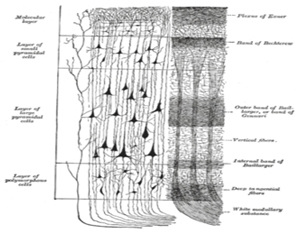
Figure 1. A single column (1 mm2) that is a brain cortex's information processing unit.
- NEST enables to simulate and predict the signal processing for a network consisting of 1.73 billion nerve cells connected by 10.4 trillion synapses
- NEST enables several hundreds thousand-core parallel computing with the K computer. It aims the world's fastest neural simulation.
Tomoki FUKAI, Laboratory Head, RIKEN Brain Science Institute
The code investigates how the 6-layers of cortical local circuits process sensory and motor information under the influence of top-down input
Integrate-and-fire neuron model and conductance-based neuron model
Solving the nonlinear simultaneous differential equations numerically
Hybrid(MPI+thread) at same granularity
C++, SLI, MPI, GSL
To be released
- RICC's 256-core parallelization
- Required memory/disk storage: 25GB/200MB
- Use 100,000 cores in parallel
- Required memory/disk storage: 2.5TB/20 TB.
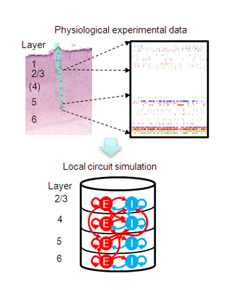
- Finding the clue about how the complicated interactions among neurons in each cortical layer realize the system for information processing
- Finding the clue about a brain-type, flexible, low power-consumption information processing technology (IT) by understanding the brain's IT system.
- N. Wagatsuma, T. C. Potjans, M. Diesmann, and T. Fukai, Layer-dependent attentional processing by top-down signals in a visual cortical microcircuit model, Front Comput Neurosci (in press..).
Shiro USUI, Team Leader, RIKEN Brain Science Institute
The code targets the visual system being built with the mathematical model that is described in each level of function, cell, and ion current for cortex, retina, ophthalmological optics, and eye motion (brainstem). The code has the integration of the models with the common format, and also the simulation library
The ion current- or conductance-based cell model. The receptive field and retina image solved by convolution operation
Runge-Kutta method, convolution operation
Spatial decomposition
C, C++, OpenMPI, GSL, netCDF
Code is available through ISLIM download site.
The analysis of generation mechanism for the eye motion (especially micro motion), the generation of detailed retina image and visual cell output, and the motion detection mechanism in the corticis using RICC's tens of cores
The visual illusion simulation with the whole-visual-system large-scale model using more than 2,000 cores.
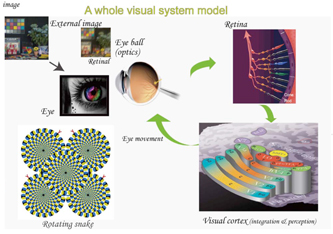
Figure 1. The concept of the whole-visual-system model.
- The test and evaluation of drug's side effects for visual function (such as color vision) by refining each mathematical model that builds a visual system
- The whole-visual-system's mathematical model helps analyze visual functions (such as visual illusion mechanism) and visualize the information processing at the parts of the visual system.
Naoto YUKINAWA, Kyoto University
The software platform for neuronal morphological simulation by integration of kinetics of cytoskeletal filaments, cell membrane dynamics, and reaction-diffusion of intracellular molecules
The multicompartment reaction-diffusion, energy optimization based on celluar membrane discretization
Runge-Kutta method, the steepest descent method
Hybrid parallelization using MPI and OpenMP for membrane-energy optimization and cytoskeletal kinetics calculation
C, C++, MPI, OpenMP, GSL, NetCDF, GD, zlib
Source code is available through ISLIM download site.
- The model neuron's cellular migration simulation
- 819,200 actin filaments, 20 membrane nodes, 100x100 voxels (2,048 cores, RIKEN RICC)
- Required memory / disk storage: 600 MB / 100 MB
- Mobility simulations for neuron-configuration formation
- The number of actines: 1 million, 2,000 membrane nodes, 128x128x128 voxels
- Required memory/disk storage: 4 TB/ 2 TB.
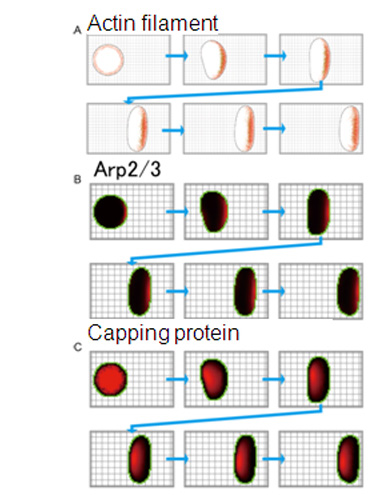
Figure 1. A cell migration simulation taking into account the cellular skeletal system's molecular reaction and the membrane skeletal system's kinetics.
- The near-real time cellular morphological simulation including axon elongation
- The quantitative evaluation about how the cytoskeletal related molecules influence the morphological change.
Ryohei KANZAKI, Professor, University of Tokyo
The code does a virtual-spatial real-time simulation for the neural circuit's information processing of an insect from sensing to action by the multicompartment model that considers each neural configuration
The conductance-based multicompartment model
The backward Euler method, Crank-Nicholson method, adaptive integration method
The cell-wise process dividing (A cell can be divided as well)
C, C++, MPI, SUNDAIL InterView
Source code is available through ISLIM download site.
- LAL's neural system simulation
- Analysis of 1024 cells with 1024 cores
- Required memory/disk storage: 1TB/10 GB
- More than or real-time simulation for the neural circuit's information processing of an insect from sensing to action
- The analysis for 10 thousands of neurons and 5 thousands of compartments with 300 thousands of cores
- Required memory/disk storage: 100 TB/1 TB.
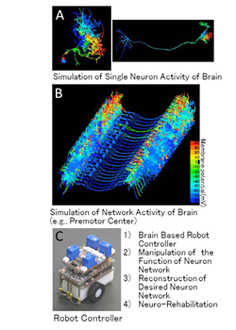
Figure 1. The simulation for the brain-neuron's activity of Bombyx mori.
- Understanding of the neural circuit's information processing from sensing to action
- Understanding about how the variation that is given to a part of insect's nervus influences the information processing
- Finding the clue for designing the neurorehabilitation and the neuroenhancement.